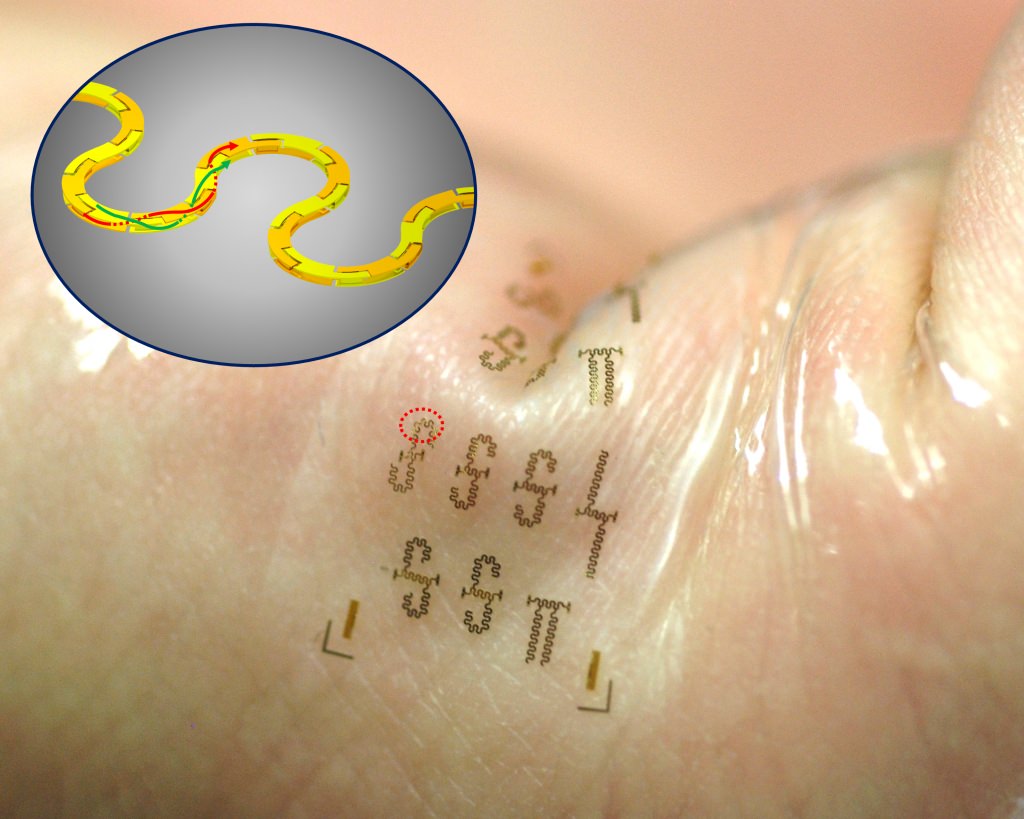Affiliate links on Android Authority may earn us a commission. Learn more.
Research team creates stretchy circuits that can be worn like lick-and-stick tattoos

The key is in their serpentine design. Extremely tiny metal blocks fit together in a DNA-esque twist that snakes back and forth along an iterative S-curve. The discrete pieces snap together in a way that the team compares to a 3D puzzle, and the zig-zagging shape of the circuit essentially forms a two-dimensional spring, allowing circuits to be stretched and twisted without diminishing their efficacy.
The team who designed this method of wearable circuitry is lead by Zhenqiang “Jack” Ma. Ma is a professor of electrical and computer engineering at UW-Madison, and today he and his team published their findings in the journal of Advanced Fundamental Materials.
Researchers are calling this the world’s fastest stretchable, wearable integrated circuits currently available, and they believe they could serve as a foundation for innovation within the Internet of Things. Previously, stretchable transmission lines were only able to attain a minimal width of 640 micrometers. This method produces stretchable integrated circuits that are only 25 micrometers thick. One of the primary utilities that the team underscores is medical. With what are essentially stick-on computers, hospital workers would be able to remotely monitor patients without more intrusive measures involving needles.
What do you think of this tattoo-flat groundwork for the future of wearables? Let us know your opinion in the comments below!